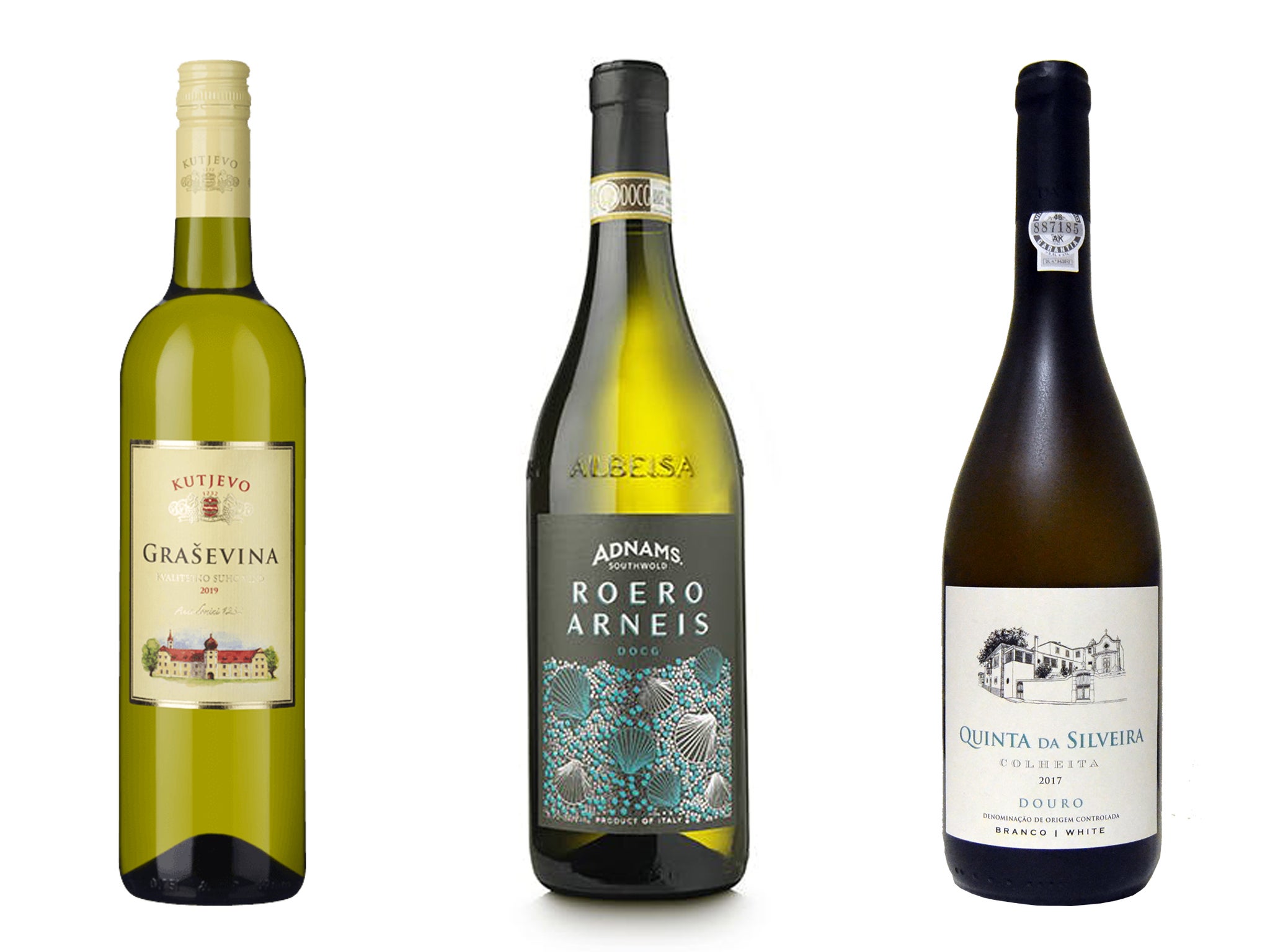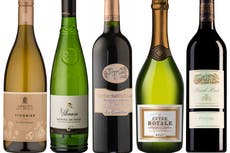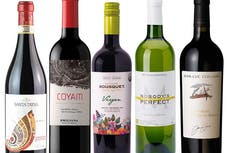The Independent's journalism is supported by our readers. When you purchase through links on our site, we may earn commission.
7 full-flavoured whites from lesser-known grapes for autumn
This season brings out the poet in Terry Kirby, well versed in the appeal of heading off the beaten track

Season of mists and mellow fruitfulness,
Close bosom-friend of the maturing sun;
Conspiring with him how to load and bless
With fruit the vines that round the thatch-eves run;
– “Ode to Autumn”, John Keats
The season of mists and mellow fruitfulness is upon us. We have had some lovely weather this week – just fine for opening some rose, perhaps the last of the year, perhaps not...
But it is now the start of the third week in September and we cannot ignore the onset of autumn.
Indeed, we should welcome it, embrace its loveliness, as did Keats. And the forecast is good, with some fine weather ahead, but also the possibility of some rain and storms somewhere in the country (depending, it seems, on the tropical storms weather on the other side of the Atlantic – yes, I’ve been obsessing about the weather forecast again).
And, with Keats in mind, is a time to think of the wine makers – across the northern hemisphere, this is when it all happens in the vineyards, as the ripe grapes are picked and the hard work moves from outdoors to the wineries.
It is a crucial time here – a little too much of that sun “to bless the fruit the vines” or rain can have a significant effect on the nature of wines that you might be drinking next year or several years down the line.
But it is not only the vines that are heavy with fruit. It is also of abundant apples and plums and other autumnal fruits, of wild mushrooms, hopefully the last of the homegrown courgettes and tomatoes and the first squashes while the shellfish season is now in full swing, with native oysters and clams to be eaten.
When it comes to the white wines to drink now, we need medium- and full-bodied wines to match some of these foods – wines that are refreshing on a warm evening, but equally good on a cooler one. Also let us look at some of the less familiar grapes, probably being picked right now, that make us realise the world does not revolve entirely around chardonnay and sauvignon blanc…
Firstly a brace of exceptional wines from eastern Europe. The Kutjevo Grasevina 2019 (£11.99, laithwaites.co.uk) comes from the Slavonia region of Croatia and is made with the local grasevina grape – which has characteristic slightly mealy, almond, saline notes, overlain with fresh pear and citrus flavours. As Laithwaites point out, there is a slight suggestion of picpoul about this and it is equally suited to all kinds of shellfish and seafood. I’d also drink it with some pork or chicken lightly cooked with wild mushrooms.
Also from eastern Europe and equally packed with intriguing flavours, the Tokaji Harselvelo 2015 (£13.78, jascots.co.uk) is from Hungary and made with the even more obscure harselvelvo grape, has lots of citrus and stone fruit character and is plump and full on the palate. Again, shellfish and lightly cooked white meats as well as a gratin or soup with some of those courgettes.
In Portugal, the majority of whites are made with indigenous grapes not seen elsewhere and blends rule, as they do in ports and reds. Antao vaz, perrum and roupeiro are used to make the well-priced Esporao Moneto Velho Branco 2017 (£8.17, thedrinkshop.com; £9.95, viaderwines.co.uk) from the Alentajo region and which is full-bodied and intense, rounded with smoky, citrus hints and shot through with minerality to deliver a clean feel on the palate; great value as well and the ideal accompaniment to fish tapas and vegetable dishes.
In the Douro, another trio of grapes, códega do larinho, malvasia and rabigato, are used to make the exceptional Quinta Da Silveira Douro 2013 (£18.95, davywine.co.uk) which is a big mouthful of rich, creamy flavours, ripe tropical and stone fruits and some herbal notes, made with grapes trodden, port style, in traditional open concrete tanks, or lagares.
As well as any kind of fish, I would make a traditional Portuguese stew of clams, pork and chrorizo to accompany this, or if you tastes are more vegetarian, it’s a perfect wine for richer mushroom dishes.
A variation on malvasia, malvasia puntinata, local to the Lazio region of central Italy is also used to make the Principe Pallavicini 2019 (£15.99, noblegrape.co.uk) which hails from an ancient wine-making family from the outskirts of Rome and is a wine of stunning complexity: rich, savoury and mouth-filling, made in a winery built on a Roman cistern and aquaduct.
In the north of Italy, in Piedmont, the roero arneis grape is used to make white wines in the Barolo region, northwest of the truffle capital of Alba, which have a real depth to them sometimes not found in northern Italian whites. A great introduction to the style is the Adnams own label Roero Arneis DOCG (£83.94 for six, adnams.co.uk) which is fresh, fruity, round and fulsome on the palate, with restrained tropical fruits. A good all-purpose wine, fine as an aperitif, but also lovely with all kinds of fish, and would be ideal with autumnal fruit crumbles, made with those blackberries and plums.
Last week I wrote about the gorgeous and varied wines of the Languedoc-Roussillon and we return there for this week’s final wine: made from the rare clairette grape, said to be the original white wine grape of the region and from the ultra-reliable Paul Mas oufit, the Vinus by Paul Mas Clairette du Languedoc 2019 (£6.50 until 6 October, then £8.25, morrisons.com) is simply stunning value: rich, complex, structured, with lovely creamy stone fruit flavours. It’s just what golden autumn days are made for.
Join our commenting forum
Join thought-provoking conversations, follow other Independent readers and see their replies
Comments


Bookmark popover
Removed from bookmarks